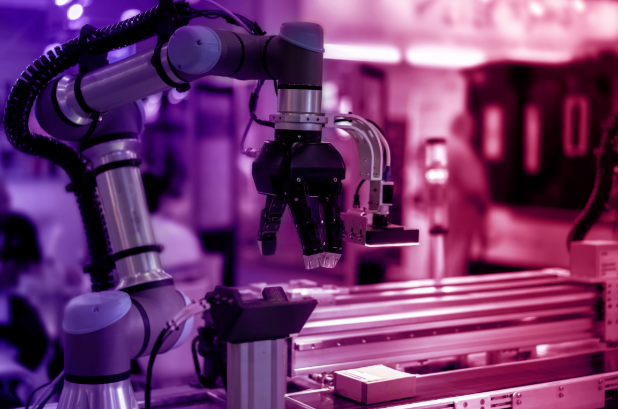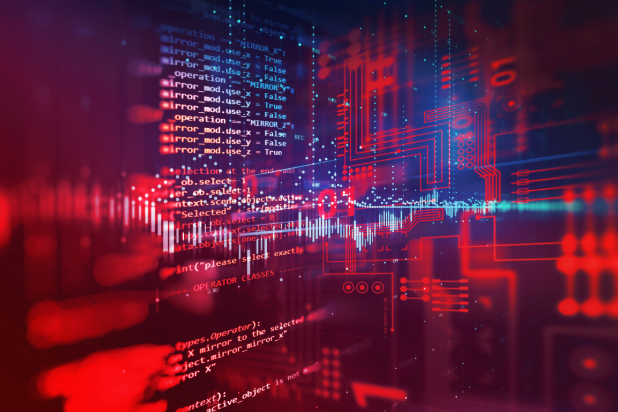keysight, released 2023 industry trend forecast (I)
Software will accelerate - Dan Krantz, Chief Information Officer (CIO), Yestech
The "digital divide" will determine the success or failure of enterprises
Turning "data insights" into business value has been an elusive goal for many companies; however, the maturation of artificial intelligence (AI) technology will eventually make this possible - companies will be able to distill data information and put it into action. This trend will continue to accelerate over the next five years; those companies that can successfully turn data into business action are expected to thrive. Their CIOs will favor solutions that balance four aspects: low-code scalability, a more intuitive user experience, richer APIs for maximum composability, and breakthrough analytic insights. Companies that fail to deliver these capabilities will fall into an "Excel wormhole" - poor financials and a decline in competitiveness are inevitable.
2. Talent 2.0: Digital agility becomes a must
Digital agility will be taken to a new level where all talent in the organization, except for the IT department, must have basic software development skills. Companies that move quickly will stand out with data science.
3. Automation affects talent recruitment and retention
In 2023, automation trends remain strong - despite economic uncertainty. Over the next few years, automation and upgrades to the systems environment will impact the ability of companies to retain employees. Employees will look for more options and set their sights on companies that employ intelligent automation systems that allow them to focus on more rewarding and creative tasks. Those companies that do not transition to automation and remain manual-first will be increasingly vulnerable to competition for talent.
4. Software development goes to robotic programming
We are used to text prediction in digital communications, but one might be surprised to find that these functions also exist in software development. In some environments, robots will suggest how to complete code; in the next few years, this will be a common occurrence. By 2028, more than half of the world's software code will be written by robots (rather than humans).

5. A new era of efficiency as the real and virtual worlds merge
In 2023, we will witness tremendous advances in the use of digital twin technology in physical systems. This will bring many benefits to a wide range of industries, such as healthcare, manufacturing, retail, and more. Imagine a surgery where the surgeon can view anatomical data and patient history from an AI assistant at any time, rather than having to pull these details from memory. It sounds like a fantasy, but a lot of work is already underway to make this a reality. More and more companies are expected to break the boundaries between the real world and the virtual world next year.
Software Automation and Quality - Gareth Smith, General Manager, Software Test Automation, Yestech
1. Automated Test Design
Traditional test automation itself still requires manual writing of code to complete tests. Model-based approaches generate tests from a central model; "Autonomic Test Design" goes a step further by automatically generating these models. This means that the models can be automatically generated as a "digital twin" of the system to be tested, and the actual tests are automatically created and executed. This greatly simplifies and optimizes testing, improves test quality, and reduces time to market. As a result, "autonomous test design" will become the mainstream test approach in 2023.
2. Sustainability of Testing
Traditional test automation is based on the need to run a large number of fixed tests at specified times (e.g., evenings, weekends, and before releases). The execution of each test is computationally intensive, which has both energy costs and environmental impacts. As energy prices increase and sustainability awareness grows, this traditional "non-intelligent" automated testing will be replaced by intelligent "test optimization" - running only problem-specific This traditional "non-intelligent" automated testing will be replaced by intelligent "test optimization" - running only problem-specific tests.
Meta-universe as a platform
To stay in touch with customers, suppliers need to have multiple channels; web and mobile are the most common, along with dedicated mobile apps, kiosks, IoT devices, ATMs, set-top boxes, etc. Discussions are expected to grow in 2023 about the metaverse being seen as an important channel for future interactions with customers. This very different channel also brings new design, build and test tasks for test vendors - meaning, they all need a mobile app, a website and a metaverse platform. Non-homogenized tokens (NFTs) can be thought of as a metaverse environment that provides a new way to deliver products and services. Testing a metaverse is a daunting task; it will present many challenges for test automation technologies, but also opportunities for accelerated innovation in this area.

4. Provide quality and operational assurance through artificial intelligence (AI)
In a digital-first world, digital products will be subject to more scrutiny as complexity increases. For safety-critical systems, scrutiny has been stringent previously, but by 2023, all areas are expected to be more stringent. The content of products, including all components and third-party components, will have to be itemized and certified to ensure that it is all authentic and original. As products become smarter and the use of artificial intelligence (AI) in systems and devices becomes more widespread, their operation will become more subtle and complex. Testing of these systems will require smarter techniques to understand test responses and validate them against acceptable operations - leading to the need to use AI to test AI.
5. Everyone is a developer
As more and more people become digitally savvy, traditional non-technical audiences are becoming more proficient and confident in using more complex systems. With advances in user experience design and usability enhancement, these new non-technical users can develop with low- or no-code techniques to meet their specific needs - in many cases without the need for separate documentation for the technical team to implement. This shortens delivery times, reduces the risk of misunderstandings, and improves overall efficiency.

Booming Technology - Daniel Thomasson, Vice President of Engineering and R&D
1. Cloud economy will ease market fears of recession
Fears of a recession in 2023 will drive more enterprises to move data-intensive tasks to the cloud to reduce infrastructure and operational costs while improving cybersecurity. Moving applications to the cloud will also help enterprises deliver a better data-driven customer experience. For example, some advanced simulation and test data management capabilities (such as real-time feature extraction and encryption) will allow the use of a cloud-based secure data grid. The grid can run new algorithms on richer data sets, driving customers to gain deeper insights faster. In the year ahead, cloud technology promises to surprise many companies in the face of economic uncertainty.
2. Defying economic hardships and pushing for digital twin deployment
In 2023, R&D efficiency is doubly important; the use of digital twins in the system design and testing process is expected to increase significantly. Digital twins help accelerate the design cycle, enabling more efficient hardware and software co-design, more robust products, lower costs, and improved manufacturability and serviceability. In the coming year, there will be more connected platforms designing and testing complete products through digital twins.

3. Advances in encryption technology enhance cloud and network security
Many organizations have been hesitant to adopt web- and cloud-based software and services due to security concerns. By 2023, these concerns are expected to be broken - with strong encryption and tight access control over measurement parameters and data, users will have unprecedented assurance of data integrity (from the probe to the cloud to the back office). As a result, we expect more cloud and cybersecurity investments in the coming year to help enterprises address expanding threats.
4. Automation: A "seat belt" in an economic downturn
In today's uncertain environment, there is a particular need for technologies that can reduce manpower requirements, such as automation and robotics. Tools that automate repetitive simulation tasks and measurement tasks are expected to see greater investment. These tools can ensure the validity of test results by automatically catching and fixing errors, and improve the quality of measurements by eliminating human-caused variation. With these and other automated capabilities, employees can act on the new insights gathered and focus on more strategic efforts.
5. AI and ML depress the cost of data volume surges
Automation and AI/ML technologies are on the rise. They help reduce the cost of managing the ever-growing volume of measurement data. These technologies will also reduce the need for manual analysis of data sets and extraction of critical metadata, as well as quickly pinpointing measurement errors from real device under test failures, thereby accelerating analysis and reducing wasted effort.
6. Support critical measurements to meet green energy goals
In 2023, reducing carbon emissions will remain a priority to meet government requirements and meet societal needs. Artificial intelligence/machine learning can help optimize the measurement and monitoring of commercial and industrial infrastructure, such as data networks, to drive higher-level energy management.

Software will accelerate - Dan Krantz, Chief Information Officer (CIO), Yestech
The "digital divide" will determine the success or failure of enterprises
Turning "data insights" into business value has been an elusive goal for many companies; however, the maturation of artificial intelligence (AI) technology will eventually make this possible - companies will be able to distill data information and put it into action. This trend will continue to accelerate over the next five years; those companies that can successfully turn data into business action are expected to thrive. Their CIOs will favor solutions that balance four aspects: low-code scalability, a more intuitive user experience, richer APIs for maximum composability, and breakthrough analytic insights. Companies that fail to deliver these capabilities will fall into an "Excel wormhole" - poor financials and a decline in competitiveness are inevitable.
2. Talent 2.0: Digital agility becomes a must
Digital agility will be taken to a new level where all talent in the organization, except for the IT department, must have basic software development skills. Companies that move quickly will stand out with data science.
3. Automation affects talent recruitment and retention
In 2023, automation trends remain strong - despite economic uncertainty. Over the next few years, automation and upgrades to the systems environment will impact the ability of companies to retain employees. Employees will look for more options and set their sights on companies that employ intelligent automation systems that allow them to focus on more rewarding and creative tasks. Those companies that do not transition to automation and remain manual-first will be increasingly vulnerable to competition for talent.
4. Software development goes to robotic programming
We are used to text prediction in digital communications, but one might be surprised to find that these functions also exist in software development. In some environments, robots will suggest how to complete code; in the next few years, this will be a common occurrence. By 2028, more than half of the world's software code will be written by robots (rather than humans).

5. A new era of efficiency as the real and virtual worlds merge
In 2023, we will witness tremendous advances in the use of digital twin technology in physical systems. This will bring many benefits to a wide range of industries, such as healthcare, manufacturing, retail, and more. Imagine a surgery where the surgeon can view anatomical data and patient history from an AI assistant at any time, rather than having to pull these details from memory. It sounds like a fantasy, but a lot of work is already underway to make this a reality. More and more companies are expected to break the boundaries between the real world and the virtual world next year.
Software Automation and Quality - Gareth Smith, General Manager, Software Test Automation, Yestech
1. Automated Test Design
Traditional test automation itself still requires manual writing of code to complete tests. Model-based approaches generate tests from a central model; "Autonomic Test Design" goes a step further by automatically generating these models. This means that the models can be automatically generated as a "digital twin" of the system to be tested, and the actual tests are automatically created and executed. This greatly simplifies and optimizes testing, improves test quality, and reduces time to market. As a result, "autonomous test design" will become the mainstream test approach in 2023.
2. Sustainability of Testing
Traditional test automation is based on the need to run a large number of fixed tests at specified times (e.g., evenings, weekends, and before releases). The execution of each test is computationally intensive, which has both energy costs and environmental impacts. As energy prices increase and sustainability awareness grows, this traditional "non-intelligent" automated testing will be replaced by intelligent "test optimization" - running only problem-specific This traditional "non-intelligent" automated testing will be replaced by intelligent "test optimization" - running only problem-specific tests.
Meta-universe as a platform
To stay in touch with customers, suppliers need to have multiple channels; web and mobile are the most common, along with dedicated mobile apps, kiosks, IoT devices, ATMs, set-top boxes, etc. Discussions are expected to grow in 2023 about the metaverse being seen as an important channel for future interactions with customers. This very different channel also brings new design, build and test tasks for test vendors - meaning, they all need a mobile app, a website and a metaverse platform. Non-homogenized tokens (NFTs) can be thought of as a metaverse environment that provides a new way to deliver products and services. Testing a metaverse is a daunting task; it will present many challenges for test automation technologies, but also opportunities for accelerated innovation in this area.

4. Provide quality and operational assurance through artificial intelligence (AI)
In a digital-first world, digital products will be subject to more scrutiny as complexity increases. For safety-critical systems, scrutiny has been stringent previously, but by 2023, all areas are expected to be more stringent. The content of products, including all components and third-party components, will have to be itemized and certified to ensure that it is all authentic and original. As products become smarter and the use of artificial intelligence (AI) in systems and devices becomes more widespread, their operation will become more subtle and complex. Testing of these systems will require smarter techniques to understand test responses and validate them against acceptable operations - leading to the need to use AI to test AI.
5. Everyone is a developer
As more and more people become digitally savvy, traditional non-technical audiences are becoming more proficient and confident in using more complex systems. With advances in user experience design and usability enhancement, these new non-technical users can develop with low- or no-code techniques to meet their specific needs - in many cases without the need for separate documentation for the technical team to implement. This shortens delivery times, reduces the risk of misunderstandings, and improves overall efficiency.

Booming Technology - Daniel Thomasson, Vice President of Engineering and R&D
1. Cloud economy will ease market fears of recession
Fears of a recession in 2023 will drive more enterprises to move data-intensive tasks to the cloud to reduce infrastructure and operational costs while improving cybersecurity. Moving applications to the cloud will also help enterprises deliver a better data-driven customer experience. For example, some advanced simulation and test data management capabilities (such as real-time feature extraction and encryption) will allow the use of a cloud-based secure data grid. The grid can run new algorithms on richer data sets, driving customers to gain deeper insights faster. In the year ahead, cloud technology promises to surprise many companies in the face of economic uncertainty.
2. Defying economic hardships and pushing for digital twin deployment
In 2023, R&D efficiency is doubly important; the use of digital twins in the system design and testing process is expected to increase significantly. Digital twins help accelerate the design cycle, enabling more efficient hardware and software co-design, more robust products, lower costs, and improved manufacturability and serviceability. In the coming year, there will be more connected platforms designing and testing complete products through digital twins.

3. Advances in encryption technology enhance cloud and network security
Many organizations have been hesitant to adopt web- and cloud-based software and services due to security concerns. By 2023, these concerns are expected to be broken - with strong encryption and tight access control over measurement parameters and data, users will have unprecedented assurance of data integrity (from the probe to the cloud to the back office). As a result, we expect more cloud and cybersecurity investments in the coming year to help enterprises address expanding threats.
4. Automation: A "seat belt" in an economic downturn
In today's uncertain environment, there is a particular need for technologies that can reduce manpower requirements, such as automation and robotics. Tools that automate repetitive simulation tasks and measurement tasks are expected to see greater investment. These tools can ensure the validity of test results by automatically catching and fixing errors, and improve the quality of measurements by eliminating human-caused variation. With these and other automated capabilities, employees can act on the new insights gathered and focus on more strategic efforts.
5. AI and ML depress the cost of data volume surges
Automation and AI/ML technologies are on the rise. They help reduce the cost of managing the ever-growing volume of measurement data. These technologies will also reduce the need for manual analysis of data sets and extraction of critical metadata, as well as quickly pinpointing measurement errors from real device under test failures, thereby accelerating analysis and reducing wasted effort.
6. Support critical measurements to meet green energy goals
In 2023, reducing carbon emissions will remain a priority to meet government requirements and meet societal needs. Artificial intelligence/machine learning can help optimize the measurement and monitoring of commercial and industrial infrastructure, such as data networks, to drive higher-level energy management.








